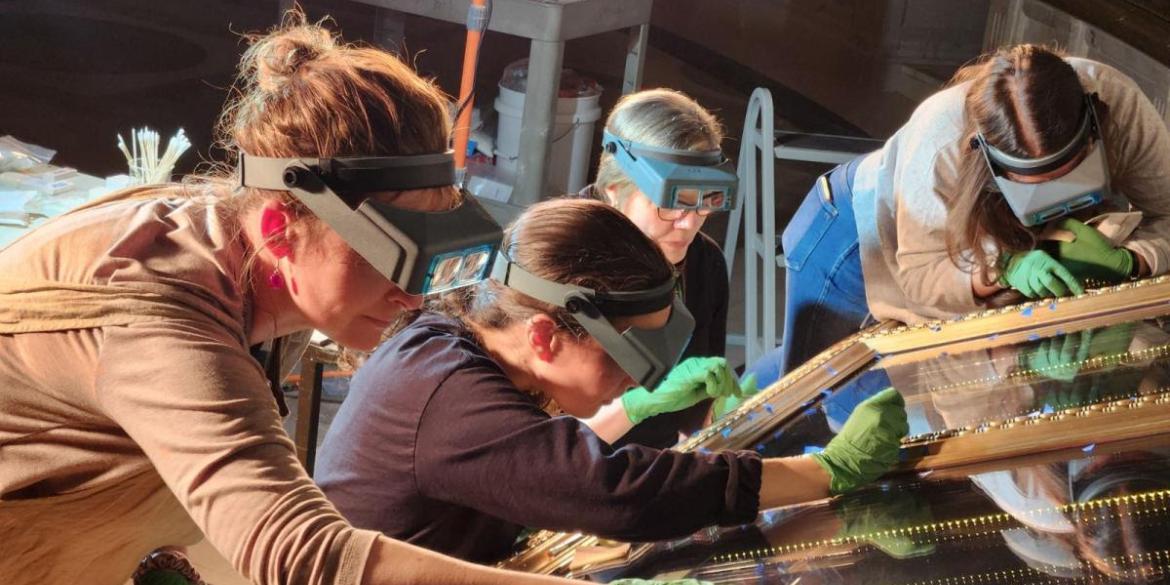
Conservators Clean National Archives Rotunda Following Vandalism Incident
By Pete Lewis
WASHINGTON, DC
Dozens of National Archives conservators and other workers conducted a painstaking cleanup for more than two days following a February 14 vandalism attack. Following the cleanup, the Rotunda reopened to the public on February 17.
During the incident, vandals intentionally spread a pink powder, which has been identified as pigment and cornstarch, on and around the encasement that houses the Constitution of the United States. The National Archives is working with federal law enforcement agencies to ensure the perpetrators are prosecuted to the fullest extent of the law.
“The cleaning of the Rotunda and preparation to reopen it was a large, collaborative effort involving Preservation Programs conservators, facilities personnel, and building services contractors,” said Stephanie Hornbeck, National Preservation Program Officer. “Approximately 30 people were directly involved, contributing an estimated total of 335 person-hours.”
Personnel used a dry method with grated erasers to clean the floor. The cases in the Rotunda were cleaned with a variety of tested tools that are compatible with the various surfaces (e.g., metal, stone, caulk)
The dry-methods cleaning protocol used was designed to effectively remove the pigment powder and stains so they would not be visible, to use methods safe for people and the marble, and to address the large affected surface areas as time-efficiently as possible.
“It was important to avoid wet cleaning methods,” added Hornbeck. “These would have transformed the dry pigment into a paint, which would have penetrated the porous marble. If this had happened, it would have been very difficult to completely remove the visible dark pink coloration.”
The main potential damage was related to pigment staining the historic marble floor and exhibit case marble bases. The floor has several different marble types and colors comprising its decorative scheme. Each marble type has different grain sizes, textures, and colored veins.
“Fortunately, the four pages of the Constitution on display were not at risk for damage by this incident,” Hornbeck said. “They are well protected by the enclosure in separate anoxic encasements located inside of the well-sealed, robust exhibit cases.”
The National Archives is located at 701 Constitution Ave. NW in Washington, DC, and is open to the public each day from 10 a.m. until 5:30 p.m. Learn more about the Founding Documents and the Rotunda on the National Archives Museum website.
